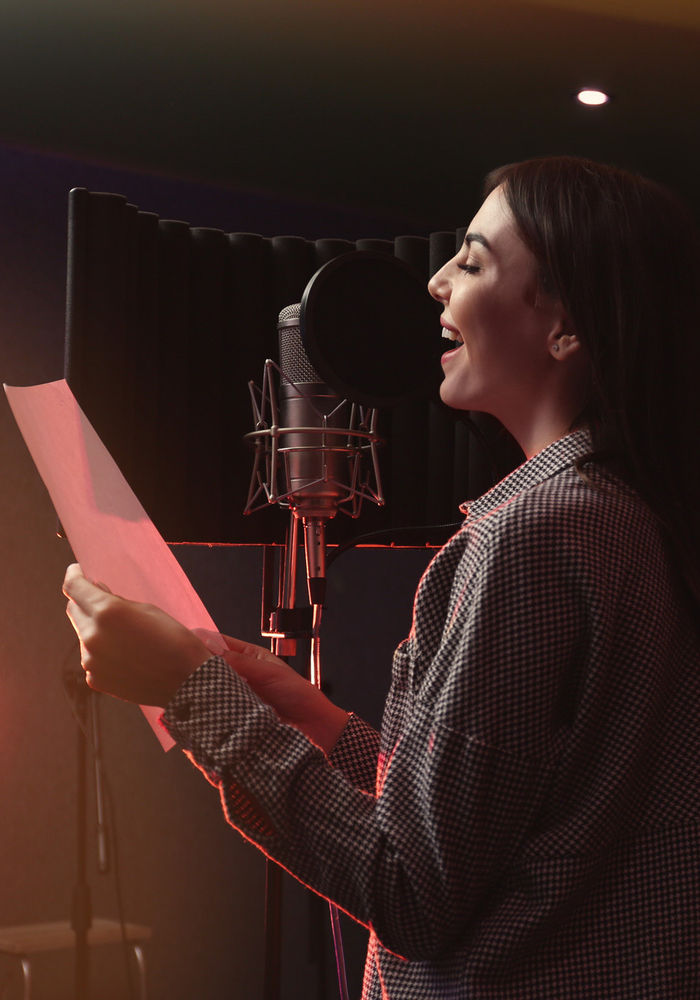A successful vocal recording session is all about preparation. There's a time and a place for spontaneity and capturing the moment, but it's a fact that you will increase your likelihood of success by taking just a few extra steps before rushing for the recording button.
Below is our quick-start guide on how to prepare for recording vocals. Given that vocals sit front and centre for the vast majority of popular music styles, it's worth taking a little extra time to get your voice and setup firing on all cylinders.
1: Create the Right Atmosphere
Recording Studios (and even home studios, for that matter) can be quite clinical places. The fact is, though, how you feel and how relaxed you or the vocalist are can significantly affect the creative output.
Creating a relaxed atmosphere, including the right refreshments, lighting, and overall environment, is one of our top tips for recording better vocals, simply because capturing the best performance possible is so fundamental.
2: Rest, Hydration, Health
The small details are often overlooked when preparing for recording vocals. Getting plenty of rest, staying hydrated, and eating healthily can greatly improve a singer's performance.
Your voice is an instrument and a part of your body, it needs plenty of rest, water, and high-quality fuel to perform at its best, just like the rest of you for that matter.
3: Don't Skip Your Vocal Warm Up
Jumping right into the deep end and singing from the top of your voice is a quick way to cause damage and will invariably affect your pitch.
Many rock performers are guilty of this, as vocals are often a secondary instrument after guitar or bass. It's often common for performers to be formally trained in the latter and not the former.
4: Know Your Lyrics Inside Out
Being well rehearsed is often overlooked, but in my experience, the better you know the song and your lyrics, the more confident your delivery.
Also, if you require a lyric sheet during tracking, it could affect your posture and have a detrimental effect on your performance.
5: Always Have a Mic Set Up Ready to Go
Plugging in and setting up a mic correctly can take up precious recording time, after which the moment of inspiration may already have passed.
To strike while the iron is hot, it's worth having your go-to mic ready to rock n' roll at all times.
6: Trial Different Vocal Mics
If your budget stretches, consider trialling more than one vocal mic. It's worth keeping a variety of mics in your cabinet for different vocal styles, and performances.
It's easy to assume a large diaphragm condenser microphone will be the best choice for recording vocals. After all, they're the most common type of microphone for studio vocals, and we're used to seeing them in studios worldwide.
For a good reason, they dominate, thanks to their ability to capture a refined high-end and plenty of detail. All large diaphragm mics sound different, of course, so you'll hear many tonal differences from one model to the next.
That said, many vocal styles and music genres can benefit from the profile of a different mic. For example, many rock and rap vocals sound great and have an easier time sitting in the mix when recorded using a dynamic microphone. In your vocal preparations, tale that extra few minutes to trial both types, and perhaps even a ribbon mic if you can, you'd be surprised how much it might test your old assumptions.
7: Get the Headphone Mix Right
Clear headphone monitoring can elevate a vocalist's performance. Make sure the vocalist (be it you or the recording artist) can clearly hear their own performance in context with the track.
If the rest of the track is drowning out their own performance, it can significantly hamper their confidence and pitch, resulting in a sub-par recording.
You can enhance a performer's confidence further by adding a little reverb to the monitor mix. Some call this trick the singing in the show effect.
8: DO Fret Over Mic Positioning
Distance and position of the microphone can make a huge difference to a vocal recording.
Depending on your microphone, there are many points to consider here:
- As a default position, start with the singer roughly 6 inches from the mic. Moving closer to the mic increase the intimacy of a recording, while moving further away will introduce more room reverberance.
- Tilting the mic off-axis or pointing it below the singer's mouth can help reduce high-frequency sibilance.
- Good posture will improve a singer's performance, so keep this in mind when setting up your mic position.
9: Use a Pop Filter to Avoid Pesky Plosives
Aggressive 'P' and 'T' sounds, otherwise known as plosives, can send a gust of air into the mic capsule and destroy a vocal recording. No amount of editing can truly remove or fully mitigate this problem, so it's best to place a pop filter between the vocalist and the mic to filter these out.
How to Prepare for Recording Vocals - The Bottom Line
It's important not to get hung up on the technical details when recording vocals. Recording, mixing and microphone technique are all important, but you'll make life a whole lot easier if you ensure you or your vocalist are in tip-top shape before heading into the studio.
That said, steps one, two, and three are the most important aspects of preparing for any vocal recording session. You can have the best gear and microphone technique this side of Abbey Road, but if your voice isn't warmed up correctly and you're hung over from last night's party, you're setting yourself up for an uphill struggle. Get these stages perfected, however, and you'd be surprised what you'll squeeze out of the most rudimentary of recording gear.



